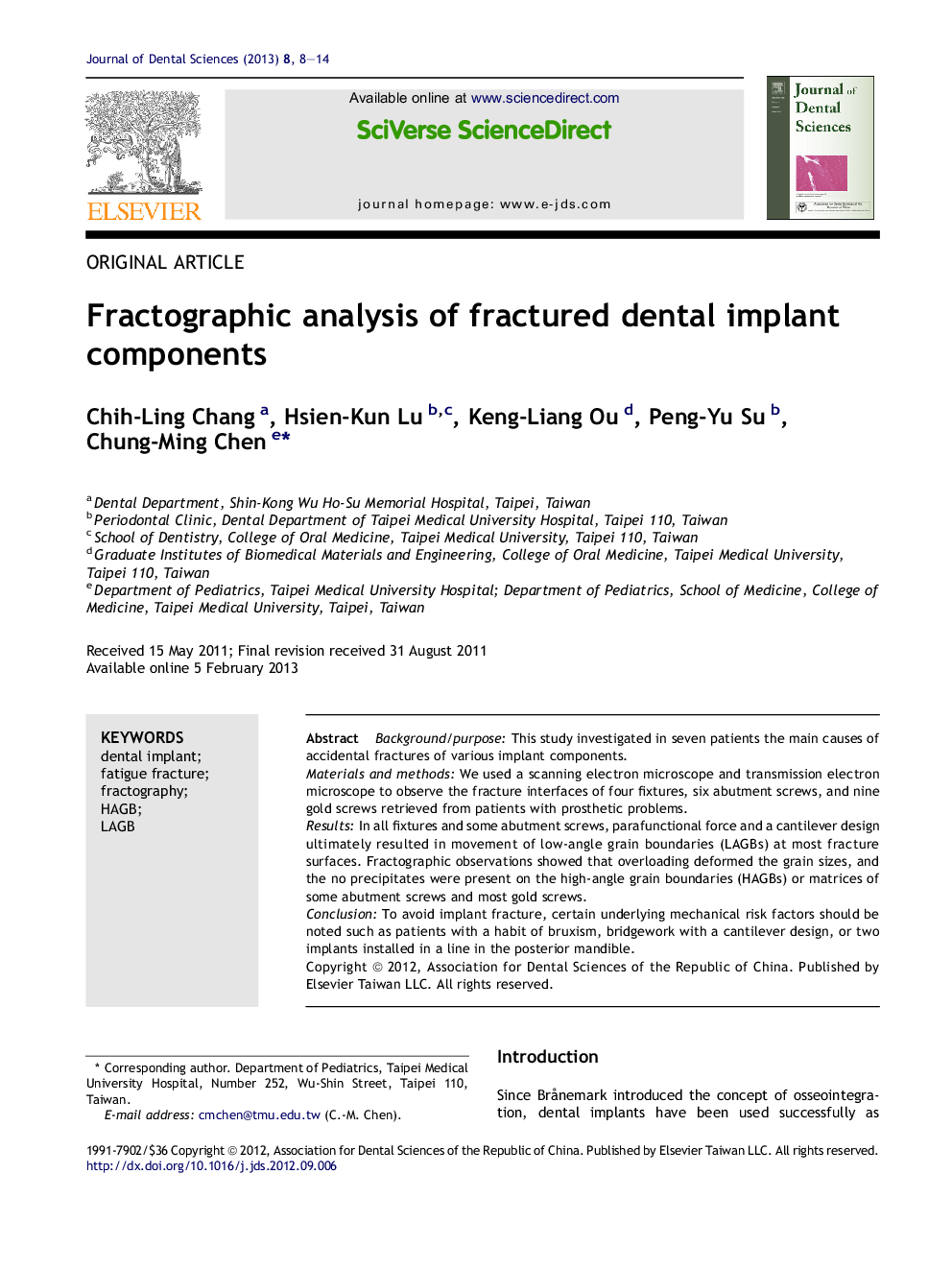| Article ID | Journal | Published Year | Pages | File Type |
|---|---|---|---|---|
| 3145634 | Journal of Dental Sciences | 2013 | 7 Pages |
Background/purposeThis study investigated in seven patients the main causes of accidental fractures of various implant components.Materials and methodsWe used a scanning electron microscope and transmission electron microscope to observe the fracture interfaces of four fixtures, six abutment screws, and nine gold screws retrieved from patients with prosthetic problems.ResultsIn all fixtures and some abutment screws, parafunctional force and a cantilever design ultimately resulted in movement of low-angle grain boundaries (LAGBs) at most fracture surfaces. Fractographic observations showed that overloading deformed the grain sizes, and the no precipitates were present on the high-angle grain boundaries (HAGBs) or matrices of some abutment screws and most gold screws.ConclusionTo avoid implant fracture, certain underlying mechanical risk factors should be noted such as patients with a habit of bruxism, bridgework with a cantilever design, or two implants installed in a line in the posterior mandible.
